Protecting Feckenham’s moated manor site
- 18th September 2023
Feckenham Manorial Moated Site is a nationally significant scheduled monument. Despite this, it has been on an ‘at risk’ heritage register – until now, that is. Owned and managed by Redditch Borough Council, it is also a key green and recreational space within the heart of Feckenham village, and the focus of a community group’s efforts.
Recorded in historical documents – variously as Court House, Court Close or Bennett’s Bower – Feckenham Manorial Moated Site incorporates the buried and earthwork remains of an exceptionally large, double bank and ditch, moated site. Feckenham was the administrative hub for the Royal Forest of Feckenham and the moated site is thought to have been the probable site of the royal manor house (used when the king was hunting in the Royal Forest) and then subsequently a court house and later a jail.
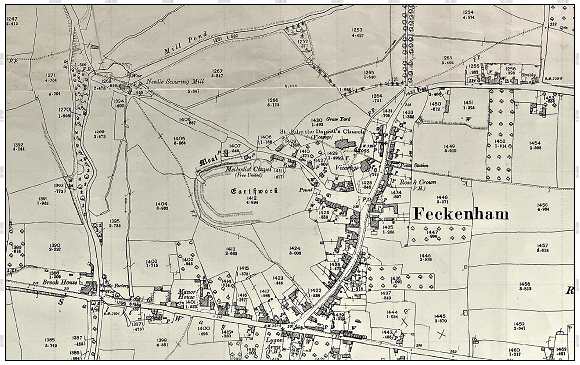
Rectified Historic Ordnance Survey map, dated 1904, showing Feckenham Manorial Moated Site. © Crown copyright and database rights 2023 Ordnance Survey AC0000809204.
The site is first documented in a land charter of AD 802 which suggests possible Early Medieval/ Anglo-Saxon origins. It is also close to the Saltway/Droitwich Road, which is a known Roman saltway, with likely earlier, prehistoric origins.
The earliest known reference to the moated site itself is from the 1161-1162 Pipe Roll, which records expenditure on the king’s houses of Feckenham. This and later entries, up to 1208, note the existence of the king’s chamber, chapel, repairs of the buildings and their surrounding palisade, a fishpond (vivary) and mill.
By 1356 use of the manor house had declined and Queen Philippa sold the site to the Abbot of Evesham for demolition and salvage. There after, the site was used as the location of the Forest court house and prison, until disafforestation in 1629 led to a period of further disuse and disrepair. The site is documented to have been planted with tobacco during the reign of Charles II (1649-1651), until planting of it was prohibited by an Act of Parliament.
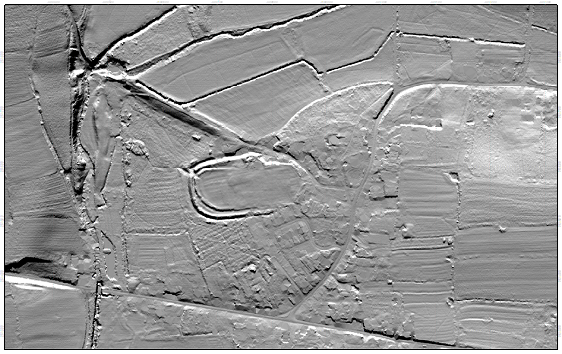
Environment Agency LiDAR imagery showing earthworks at Feckenham Manorial Moated Site. © Crown copyright and database rights 2023 Ordnance Survey AC0000809204.
Recognising a monument at risk
Founded in 2014, the Feckenham Manorial Moated Site Community Archaeology Group was established after growing awareness of the poor and declining condition of the moated site, which had been placed on Historic England’s ‘At Risk’ Register. Although managed and maintained by Redditch Borough Council, the group recognised the potential of the community to support positive change at the site; by pursuing grant funding and supplying time and expertise, in support of the landowner.
In 2018, Worcestershire Archive & Archaeology Service were asked to produce, on behalf of the group, a comprehensive Conservation Management Plan for the moated site. This collated and analysed data about the scheduled monument to help create an effective management strategy. It also determined a schedule for works that would bring about optimum conditions and reduce risk to the site’s significance.
Following arboricultural, archaeological and ecological surveys, a final 10 year Conservation Management Plan was approved by Historic England in 2021. Proposed works included tree management, scrub clearance, litter monitoring and site interpretation (subject to scheduled monument consent where needed). The Plan aimed to not only improve the condition of the archaeological monument itself, but also to enhance the biodiversity and recreational value of the site.
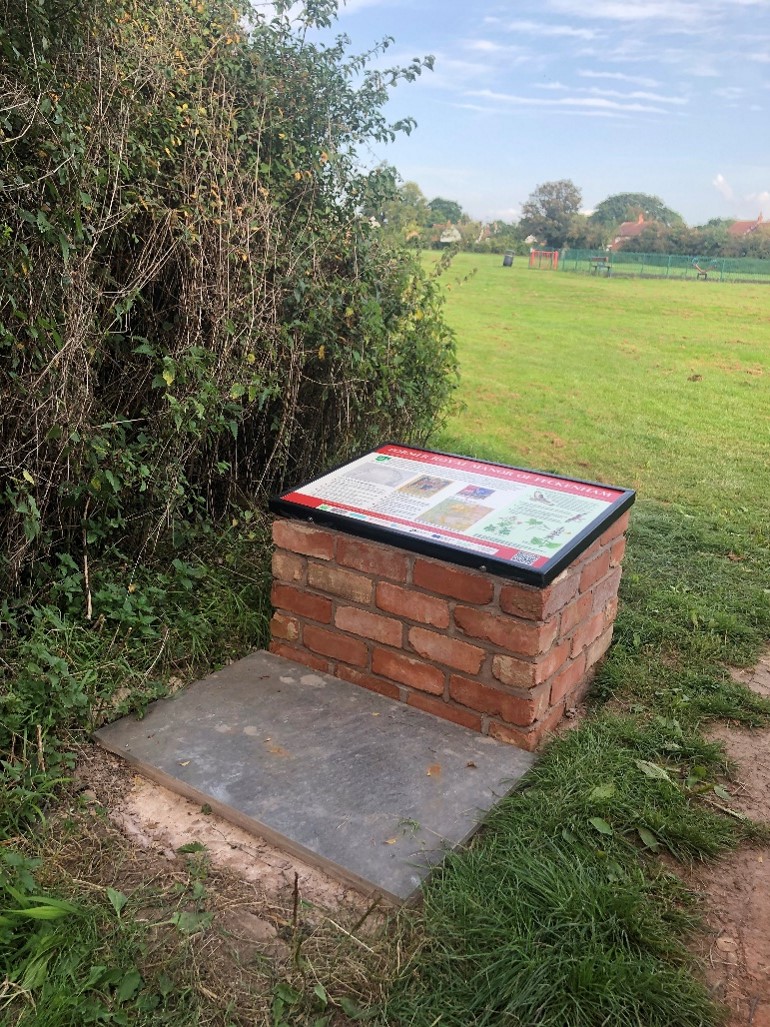
One of two new interpretation panels on the site.
3 years into the plan and off the At Risk Register
After three years of collaborative, hard work between Redditch Borough Council, Worcestershire Wildlife Trust (thanks to funding from the Natural Networks Programme), the Community Archaeology Group and the wider community, the condition of the moated site has improved to such an extent that it has been removed from the ‘At Risk’ Register. An impressive achievement!
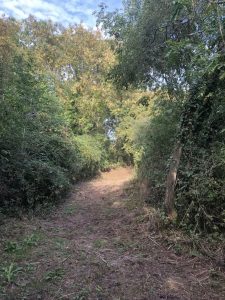 The inner ditch of the moated site, cleared of invasive scrub. |
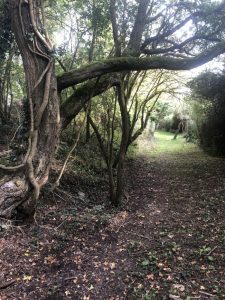 The outer ditch of the moated site, cleared of scrub. |
Whilst still vulnerable – the site could easily deteriorate should management cease – this incredible achievement is testament to the positive impact of community participation in archaeological heritage management, as well as the dedication and perseverance of the community group. In addition to supporting management of the monument, another key aim of the group has been to enhance community appreciation of the site and support further, non-intrusive, archaeological investigation.
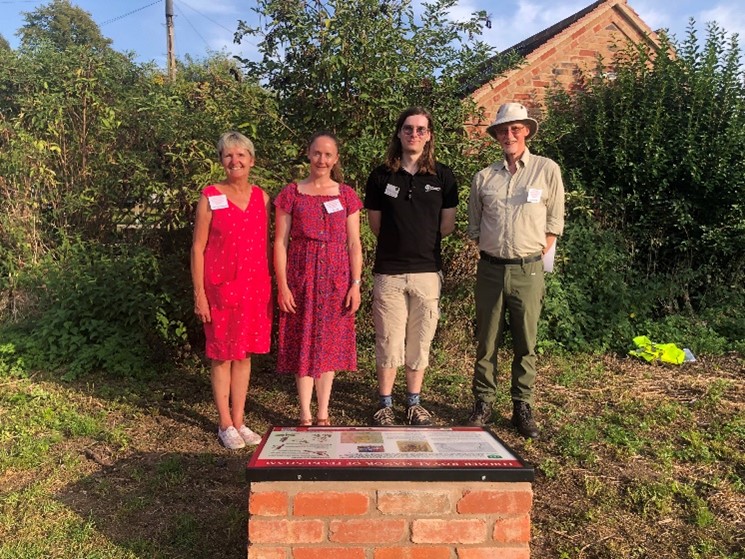
Left to right: Judy Underwood, Jen Cary (community group), Finley Reynolds (Natural Networks Officer, WWT) and Chris Bristow (community group).
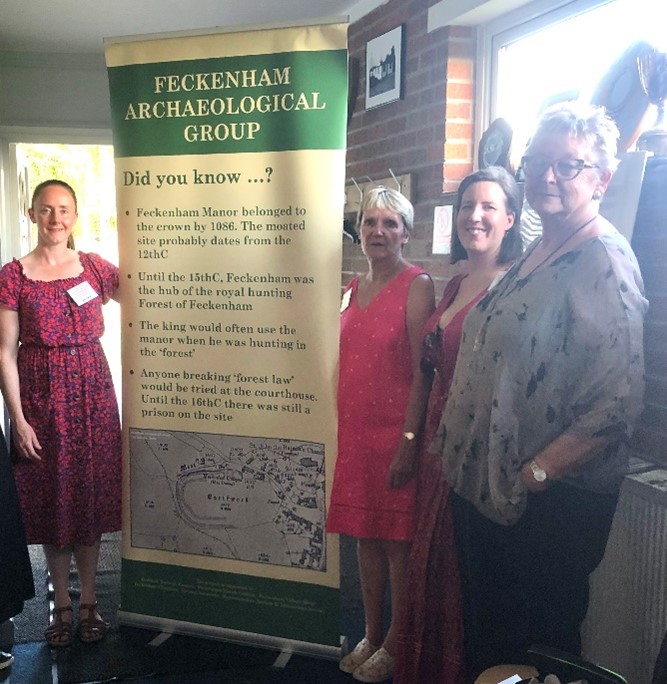
Jen Cary, Judy Underwood, Cate Statham and Kathy Gee of the Feckenham Manorial Moated Site Community Archaeology Group.
Very interesting. I moved away in the 1960s and didnt know it existed!